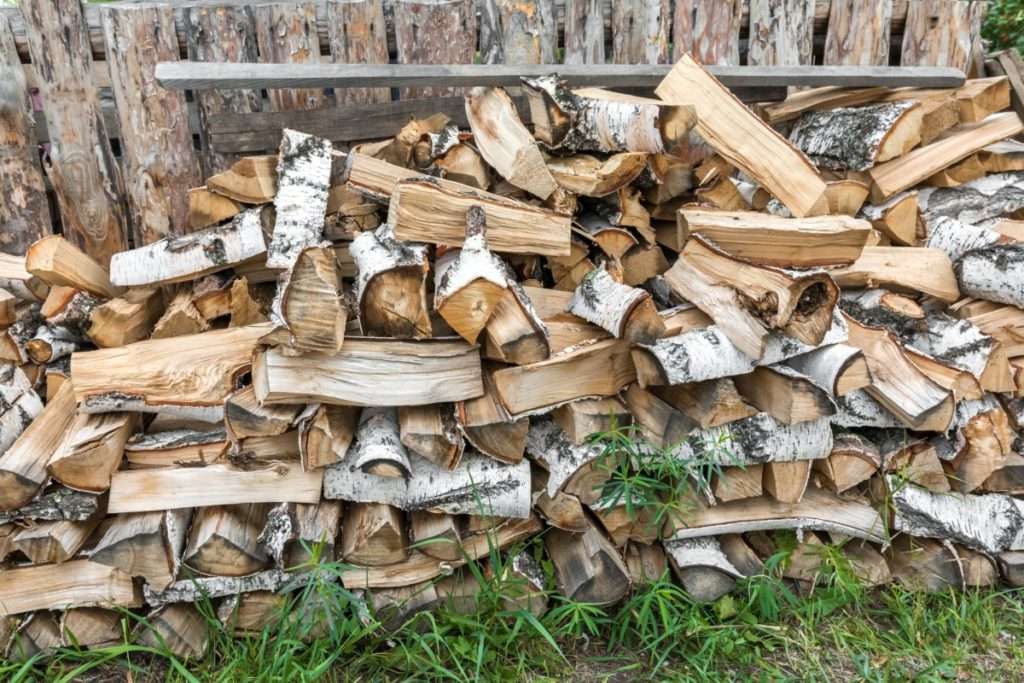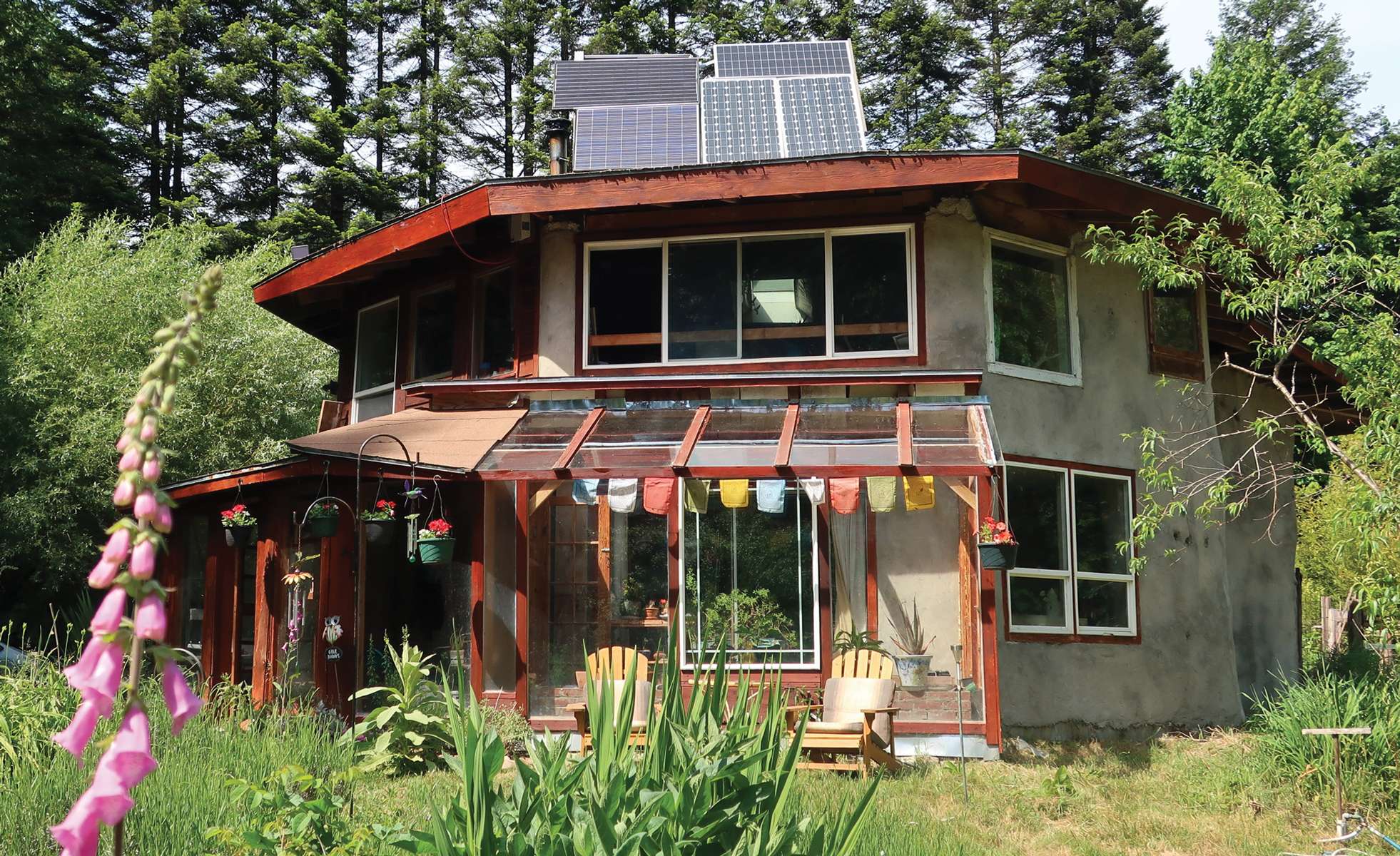Living off the grid can be a fulfilling and liberating lifestyle, but it also comes with its fair share of challenges, particularly when it comes to managing costs. One area where you can significantly reduce your expenses is by obtaining free firewood. There are various avenues you can explore to acquire it, such as reaching out to businesses that use a lot of wood, joining local social media groups, offering tree trimming services, or even collecting firewood from the side of the road with permission. However, it’s crucial to ensure that the firewood you obtain is properly seasoned and safe for burning. In this article, we will explore different ways to obtain free firewood and provide tips on how to properly prepare it for use, so you can keep your living costs down and enjoy the warmth and comfort of a crackling fire.

Ways to Obtain Free Firewood
When you’re relying on firewood to keep warm or cook meals, finding ways to obtain it for free can be a game-changer. Not only does it help reduce the overall costs of living for those off the grid, but it also provides a sense of self-sufficiency and sustainability. Here are a variety of ways you can obtain free firewood.
Businesses that use a lot of wood
One effective way to obtain free firewood is by reaching out to businesses that use a significant amount of wood in their operations. Places like sawmills, lumberyards, and woodworking shops often have discarded or leftover wood that could be perfect for your needs. By establishing a relationship with these businesses and offering to pick up their wood waste, you’ll not only be getting an abundant supply of firewood but also helping them with their waste management efforts.
Local social media groups
With the rise of social media, local community groups have become a popular way to connect with others in your area. Many communities have dedicated groups where people can offer or exchange goods and services for free. These groups can be a goldmine for free firewood, as people often have fallen trees, excess firewood, or wood scraps they’re willing to give away. By actively participating in these groups and keeping an eye out for free firewood posts, you can secure a steady supply without spending a dime.
Offering tree trimming services
If you’re physically capable and have the necessary tools, offering tree trimming services can be a mutually beneficial arrangement. Many homeowners have trees that need pruning or removing, and they often have no idea what to do with all that wood. By offering to trim their trees for free in exchange for taking the wood, you can secure an ongoing supply of firewood while helping others maintain their property.
Cutting down dead trees with permission
Dead trees pose a potential hazard and need to be removed, especially in residential areas. However, cutting down trees requires permission from the property owner and potentially meeting local regulations. By offering your services to remove dead trees for property owners, you can obtain the firewood for free. Remember to always prioritize safety and follow proper cutting techniques to ensure a smooth and accident-free process.
Construction sites
Construction sites often generate a significant amount of wood waste from demolitions, renovations, or excess materials. Contacting local construction companies and offering to haul away their wood waste can result in a steady supply of free firewood. Keep in mind that you may need to coordinate with the site manager or obtain permission before collecting the wood. Additionally, be prepared to sort through the wood to ensure you’re only taking usable pieces.
National forests
For those living near national forests, obtaining free firewood can be as simple as obtaining a permit. National forests often offer permits for individuals to collect firewood, typically fallen or dead trees, for personal use. These permits tend to be affordable and allow you to access designated areas within the forest. However, it’s important to follow the regulations and guidelines set by the forest service, as they are in place to protect the ecosystem and prevent overexploitation.
Cleaning up after a storm with permission
Severe storms or high winds can cause trees to fall, creating plenty of firewood opportunities. If you have experienced a recent storm in your area, reach out to local authorities or property owners to offer your assistance in clearing fallen trees. By obtaining permission and coordinating your efforts, you can collect firewood from the aftermath of the storm while helping the community recover.
Collecting firewood from the side of the road with permission
Some areas allow individuals to collect firewood from the side of the road, typically in rural or less populated regions. Before venturing out to gather firewood, contact your local authorities or transportation department to inquire about any regulations or permits required. Remember to prioritize safety when collecting firewood from the roadside and be cautious of traffic.
Forest roads
Forest roads often have fallen trees or dead wood that can be collected for firewood. These roads are typically used for maintenance or access to remote areas. However, before venturing onto forest roads and collecting firewood, it’s important to check with the forest service or local authorities for any regulations, permits, or closures. Ensure that you have the necessary tools, equipment, and knowledge to safely navigate forest roads.
Local stores
Certain local stores may have a surplus of wood or wood scraps that they’re willing to give away. These can include hardware stores, home improvement centers, or even local garden supply stores. By establishing a relationship with the store owners or managers and expressing your need for firewood, you may be able to secure a regular supply of free wood.
Wood pallets
Wood pallets can be an excellent source of free firewood, as they are often discarded or left behind by businesses. Many stores receive shipments on wooden pallets and are happy to get rid of them. By contacting local stores or warehouses and offering to pick up their wood pallets, you can gather a significant amount of firewood. However, keep in mind that not all pallet wood is suitable for burning, so ensure you’re using clean and untreated pallets.
Woodworking shops
Woodworking shops, especially those specializing in carpentry, may have wood scraps or offcuts that they’re willing to give away. These pieces may be too small or irregular for their purposes but perfect for firewood. Reach out to local woodworking shops and offer to take these scraps off their hands. Not only will you be obtaining free firewood, but you may also have the opportunity to interact with skilled craftsmen and learn a thing or two about woodworking.
Electric companies
In some areas, electric companies trim trees and perform maintenance to prevent interference with power lines. This often results in a surplus of wood that they’re willing to give away. Contact your local electric company and inquire about the possibility of obtaining firewood from their tree maintenance efforts. By assisting them in their tree trimming endeavors, you can benefit from free firewood while helping ensure uninterrupted power supply for your community.
Ensuring the Quality and Safety of Firewood
Once you’ve obtained your free firewood, it’s essential to ensure it is of good quality and safe for burning. Proper seasoning and identification of safe firewood for burning should be prioritized to maximize the efficiency and safety of your wood-burning efforts.
Proper seasoning of firewood
Properly seasoned firewood is crucial for efficient burning and reduced smoke emissions. Freshly cut wood contains a high moisture content, which hinders its ability to produce substantial heat. To season firewood effectively, it should be stacked in a well-ventilated area, preferably off the ground, and exposed to the sun and wind. This allows the wood to dry out over time, decreasing its moisture content and increasing its energy efficiency.
It’s recommended to stack firewood in a way that promotes airflow between the pieces, allowing for efficient drying. This can be achieved by stacking the wood in a crisscross pattern, creating small gaps between the logs. Additionally, covering the top of the stack with a waterproof tarp can protect the wood from rain or snow while still allowing air circulation.
Properly seasoned firewood is characterized by its dryness, indicated by a lighter weight, loose bark, and cracks on the ends of the logs. When you tap two pieces of seasoned firewood together, they should produce a sharp, resonant sound. In contrast, unseasoned or green wood tends to be heavier, have tight bark, and may produce a dull thud when tapped together.
Identifying safe firewood for burning
Not all wood is suitable for burning. When gathering firewood, it’s essential to identify safe wood species that produce minimal smoke and creosote buildup. Hardwoods such as oak, maple, ash, and hickory are generally preferred for firewood, as they burn hotter and longer than softwoods like pine or spruce.
Avoid using wood from trees that are known to produce excessive smoke or emit noxious fumes when burned, such as treated or painted wood, plywood, or particleboard. These materials can release harmful chemicals when exposed to flames, posing a health risk to you and your environment.
It’s also crucial to avoid using wood that has been infested with pests or diseases. Burning infected wood can spread these issues, potentially harming nearby trees and plants. When gathering firewood, inspect the wood for signs of insect activity, fungal growth, or other signs of decay. If you’re unsure about the wood’s safety, it’s best to err on the side of caution and find an alternative source.
By following these guidelines for proper seasoning and safe wood selection, you can ensure that your firewood is of high quality, maximizes heat output, and promotes a safe and clean burning experience. Remember to always prioritize safety when handling and burning firewood, and enjoy the warmth and comforts it brings to your off-grid lifestyle.





